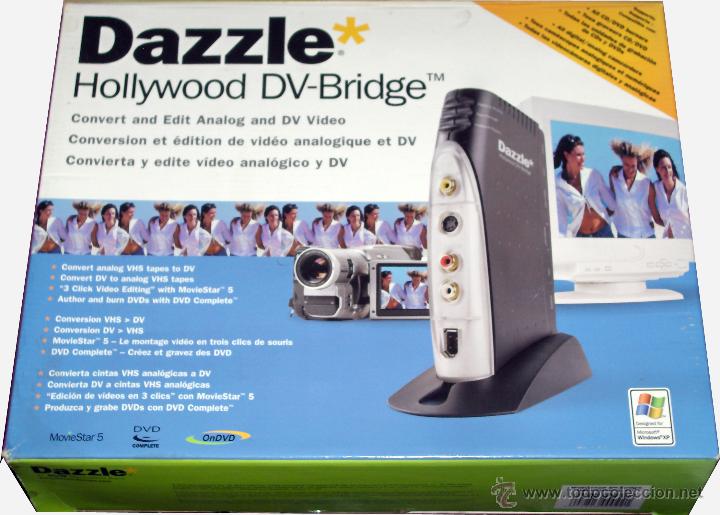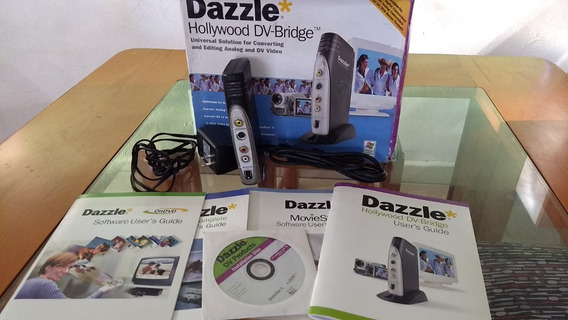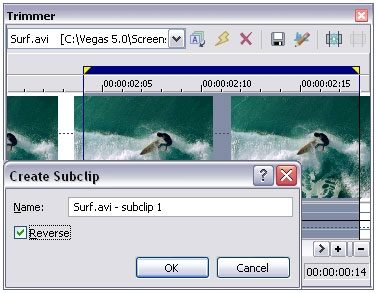Digital video production, editing and publishing offer genuine opportunities for kids to learn and express that knowledge in new ways
Once again, sorry if this is an old question, but Search is still down, & spot-checking the archives hasn't helped.I have a new PowerMac, and a bunch of videotapes. Free download dazzle driver for mac Files at Software Informer. Download sketchup 2017 full crack 32bit. MovieStar 5 handle DV, MPEG and Motion JPEG equally well, and it allows you to achieve professional results quickly and easily.
Click here for the full-color PDF version of this article - 16mb
© 2001 Gary S. Stager/ MagazineDistrict AdministratorPublished in the December 2001 issue
With the possible exception of faster processor speeds, there have been few major developments in personal computing over the past few years. Recent advances in computer and communications technology have had little impact on the nature of teaching and learning. The availability of the World Wide Web, handheld computers and wireless communication offer enormous potential, but have thus far allowed us to add speed and convenience to traditional aspects of schooling without transforming the learning experience.
Instructional media has been oversold since the days of Edison as a solution to our educational challenges. However, Dewey, Piaget, Vygotsky and Papert tell us that changing the mode of delivery offers little assistance in transforming learning. Powerful learning occurs when we shift the emphasis from the teacher to the learner… less us more them.
The 1970s ushered in the era of low-cost video recorders and portable video cameras. This innovation offered teachers and students with a vehicle for producing their own content. Now student productions could be archived, played in other classrooms and sent home to share with the family. Imaginative schools built television studios, offered courses in TV production and some even made cassettes of student performances available in local video stores.
Digital video production, editing and publishing offer genuine opportunities for kids to learn and express that knowledge in new ways. As with desktop publishing and multimedia authoring, Apple Computer is bringing digital video to the masses with innovation, ease-of-use and affordable technology. Other companies are now working overtime to offer similar capabilities in their products.
Administrators and school leaders need to understand how this technology is different and what the occupants of classrooms can do with it.
DV in a Nutshell
Digital video cameras, now widely available from companies such as Sony and Canon, store images in the same digital form (bits) as computers store data. This allows video to be transferred from camera to computer and computer to camera without any loss. In other words, every copy is of the same quality as the original. Apple patented FireWire, the high-speed low-cost digital transfer technology used by nearly all digital video cameras and a growing assortment of hard drives, CD-burners and other peripherals. FireWire is also known as iLink by Sony and IEEE 1394 by other companies. The Academy of Television Arts and Sciences just awarded Apple a 2001 Primetime Emmy Engineering Award for FireWire’s material impact on the television industry. Essentially, FireWire is a way to move data between digital devices.
The real power of digital video is found in the editing process. Just a couple of years ago this required digitizing analog video before your computer could work on it. This process involved converting the analog information on a VHS tape into the bits used by the computer. This transfer process caused a loss in quality. If you wanted your edited production to be distributed via TV or VHS, then there would additional loss in quality during the second transfer. Special add-on cards or other peripherals usually needed to be purchased to make digiting possible. Apple computers all ship with built-in Firewire and other computers can add FireWire cards at an additional cost if those computers have expansion capabilities.
Once the video is stored on your hard drive you may edit it. Editing brings value to those boxes full of tapes you have and reduces the likelihood that every student production looks like a never-ending bloopers real. Editing may be used to shorten and cleanup video. It may also be used as a way to enhance storytelling through reordering events, or by adding narration, dramatic music, transitions and special effects. Every FireWire Macintosh comes with iMovie 2 for free. iMovie allows computer users to capture video from a camera and edit stunning productions with the ease of a word processor. When your movie is complete, output it back to tape or compress it for distribution via CD, the Web or DVD. (see sidebar for PC alternatives)
Digital video requires a great deal of disk space. A little more than 9 minutes of video requires 2 gigabytes of disk space. Large external FireWire drives are an excellent way for schools to store large video files. These drives also offer teachers portability. They can be moved to where they are needed. FireWire drives may also be chained together to create large banks of data storage. You can never be too rich or have too much hard disk space.
I would suggest that finished productions should be exported to DV tape and archived in that small low-cost way. Preserving video on hard drives makes that video vulnerable to a variety of threats (crashes, erasure, etc…) and is too costly. You can always import video from an archived tape and re-edit it for a different purpose or audience.
When your video masterpiece is complete it is time to share it with an audience. iMovie 2 and other programs allows you to prepare the video for a variety of media (CD, Web, DVD) through compression. Compression is a mathematical process by which the file size is reduced in order to save space and deliver the video quicker via limited bandwidth. You will need to make decisions about tradeoffs between size and quality. Smaller file size means lower quality video, but much of this compression is either difficult to see or acceptable for classroom purposes.
If you wanted to share the school play with out-of-town grandparents last year, schools had two digital options; low-quality video on CD-ROM or stream the video on the web. Streaming media is cool, but often requires high bandwidth, expensive servers with large storage capacity and the employment of a technical staff capable of running those servers. Today, $2500 Macintosh G4 computers include the SuperDrive and iDVD software. The SuperDrive allows the playing of CDs and DVDs, plus the creation of CDs and DVDs. That’s right, you can now make your own DVDs! The free iDVD software is even easier to use than iMovie 2. Drag your video files onto the iDVD screen, choose a visual style for your menu and press burn. A couple of hours later you have a full-quality hour-long DVD that Grandma can pop into her DVD player! (subsequent copies are made much quicker) This technology represents a leap-frog effect on the streaming technology many of us were betting on just a year ago. Imagine a day in the not too distant
Educational Applications
Digital video offers numerous opportunities for student expression through all kinds of storytelling across the curriculum. Personal stories, skits, plays and recreations of historical or scientific events are all possible. Fictional stories may be depicted and mathematical models may be explained. The editing process allows for enhancing the storytelling.
Video offers unprecedented opportunities for students who need to express themselves and their ideas. The obstacles associated with writing and oral presentation make it too difficult for many students to convey their creativity and knowledge. Video and the ability to edit that video lowers the bar on communication. This communication now has a limitless audience available via the web, CD, tape and DVD.
Kids engaged in the production of school news programs, interviews and even commercials gain first-hand knowledge of the ways in which media may be used to manipulate us. Media literacy concepts of bias, point-of-view, propaganda and advertising take on new meaning when kids are behind the camera and the editing process.
You may engage the community in the life of the school through the repurposing and publishing of school events. Tapes of classroom productions may be broadcast on local cable, sent home on CD/DVD or even made available in local video shops for free loans. These efforts keep citizens abreast of the activities in your school and may increase community support for your efforts.
Students may use video cameras and digital editing to document their learning process in a variety of ways. Video is used to tell the story of how they learned, what they did, as well as the finished product. This enhances metacognition, exhibits student knowledge and communicates the learning activities of a school with the community. A good example of a video documenting student learning may be found at http://www.pencilsdown.org/lego.
Educators may also enhance their professional practice through digital video. Lessons may be videotaped and used to share best practices with colleagues. Similar video may also be used as a vehicle for collaborative action research. Educators can view carefully edited video case studies as an invitation to dialogue about teaching practices and learn new classroom strategies. Raw video may be used with innovative tools like those offered by LessonLab (www.lessonlab.com) as a forum for educators to discuss their own practice and that of colleagues. Examples of adults using digital video as a vehicle for reflective practice may be found at http://www.stager.org/lego/virtcamp.html.
A Sony or Canon digital video camera.
Your choice is between cameras using the smaller newer mini-DV tapes and cameras which use larger 8mm tapes. While 8mm digital cameras are larger than mini-DV models, they do have one advantage. Old analog video tapes you may have are automatically digitized when played by a digital 8mm camera. This saves money and allows you to bring old tapes in to the digital age.
iMovie 2 (Mac)
www.apple.com
Apple's groundbreaking easy-to-use, but powerful video capture, editing and publishing software has revolutionized the personal video industry and will revolutionize your classroom too.
iDVD2(Mac)
www.apple.com
Do the impossible and make your own DVDs without ever opening a manual. These DVDs may contain video and collections of digital images.
Cleaner 5 (Mac or Windows)
www.discreet.com
Cleaner 5 (previously known as MediaCleaner) is the gold standard for compressing video and converting media files. It often compresses a video by 90% with very little noticeable degradation. Answer the 'wizard's' questions about your priorities and the type of format you wish for your product and let Cleaner 5 do the work for you. It contains converters and codecs (compression algorithms) for transforming media files into different formats. The fact that Cleaner allows you to Batch process files (create a stack of projects for it to compress or convert at once) means that you can leave your computer on overnight and have it compress lots of files without your supervision.
Slick 1 & Slick 2 (Mac)
www.geethree.com
For just $29.95 you can buy sets of over 40 really cool new transitions and special effects that plug into iMovie 2.
Smartsound for Multimedia (Mac or Windows)
www.sonicdesktop.com
Smartsound for Multimedia is an amazing software package that allows you to choose a style of music, its use (zippy opener, calm background music, dramatic finale) and the duration you need. The software then magically composes a royalty-free sound file you may use in your digital productions. Other professional quality music libraries are available.
Sonicfire Pro (Mac or Windows)
www.sonicdesktop.com
SonicFire Pro picks up where Smartsound for Multimedia leaves off by allowing you to automatically score a digital video. Open a QuickTime movie, set markers for different parts of that movie and SonicFire Pro automatically composes a score for that film. The right music fits precisely into the sections of video.
QuickTime Pro (Mac or Windows)
www.apple.com/quicktime/

QuickTime is the industry standard for digital media. The QuickTime Player is free for both Windows and the Macintosh, but paying $29 turns your software into QuickTime Pro. The Pro version allows you to perform quick edits of your digital media (video, audio, animation, VR, graphics) and convert a wide variety of media types.
Dazzle Hollywood DV Bridge (Mac and Windows)
www.dazzle.com
This reasonably-priced peripheral, the top of the line product from Dazzle – a company offering a variety of media digitizing products, allows you to convert analog video from a VCR, TV or other video source into digital video via FireWire. It has inputs and outputs for FireWire, RCA audio, Composite RCA video and S-Video. iMovie 2 instantly recognizes the Dazzle Hollywood DV Bridge as if it were a digital camera. Now your digital movie may be exported directly to a VCR.
iMic is a USB device that allows you to connect a variety of microphones and audio sources to your computer without built-in sound input.
iVoice Macally (Mac)
www.macally.com

iVoice is a USB microphone with a line-in jack for computers without built-in audio.
VideoFactory 2 (Windows)
www.sonicfoundry.com
VideoFactory2 is a robust, user-friendly video editing and capture package for Windows.
VegasVideo 2 (Windows)
www.sonicfoundry.com
VegasVideo 2 is a higher-end video editing software package for Windows. It is geared towards more professional users.

Final Cut Pro (Mac)
www.apple.com

This is Apple's high-end video editing package. It allows the user to make amazing videos with professional quality effects. As a result, Final Cut Pro requires a greater commitment on the part of new users. Taking a course or buying a third-party guide might be a good idea. Although there are probably high school kids in your district who can figure it all out and teach you.
DVD Studio Pro (Mac)
www.apple.com
This is Apple's professional-level program for creating DVDs with all of the bells and whistles found on commercial DVDs (chapters, motion menus, subtitles, multiple languages, visual angles, etc…) While DVD Studio Pro has a steeper learning curve than iDVD, it is within reach of committed educators.
Blue Armadillo (Mac or Windows)
www.tech4learning.com/snacks/barmadillo.html
This free tool allows you to batch process a folder full of images. In other words you can use Blue Armadillo to change the size of a bunch of photos or convert image formats.
Acid Music 3 (Windows)
www.sonicfoundry.com
This popular PC program and its library of sound files allows the user to compose royalty-free music clips which may then be exported to include in video projects

RealPlayer Basic is the free version of the client (player) for watching streaming RealVideo and listening to RealAudio. It often works with your web browser.
RealProducer Basic (Windows or Mac)
www.real.com
RealProducer Basic is the free tool that allows you to convert your audio or video files into Realmedia files you can stream from any web site. You will need to hunt around the Real site to find the free versions of this tool. The nice folks at Real Networks naturally want you to trade-up, but for most school uses, the free player and producer software will do the job quite nicely.
Dazzle Hollywood Dv Bridge Software
A more extensive collection of free and low-cost cross-platform digital media resources may be found at http://www.stager.org/imovie/